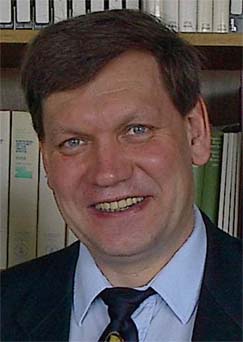Homosexuality and Fraternal Birth Order
This is new story in the New York Times is really interesting:
Pas de Deux of Sexuality Is Written in the Genes
THE NEW YORK TIMES
By NICHOLAS WADE
Published: April 10, 2007
http://www.nytimes.com/2007/04/10/health/10gene.html?pagewanted=2&_r=1&th&emc=th
A somewhat more straightforward clue to the origin of homosexuality is the fraternal birth order effect. Two Canadian researchers, Ray Blanchard and Anthony F. Bogaert, have shown that having older brothers substantially increases the chances that a man will be gay. Older sisters don’t count, nor does it matter whether the brothers are in the house when the boy is reared.
The finding suggests that male homosexuality in these cases is caused by some event in the womb, such as “a maternal immune response to succeeding male pregnancies,” Dr. Bogaert wrote last year in the Proceedings of the National Academy of Sciences. Antimale antibodies could perhaps interfere with the usual masculinization of the brain that occurs before birth, though no such antibodies have yet been detected.
The fraternal birth order effect is quite substantial. Some 15 percent of gay men can attribute their homosexuality to it, based on the assumption that 1 percent to 4 percent of men are gay, and each additional older brother increases the odds of same-sex attraction by 33 percent.
The effect supports the idea that the levels of circulating testosterone before birth are critical in determining sexual orientation. But testosterone in the fetus cannot be measured, and as adults, gay and straight men have the same levels of the hormone, giving no clue to prenatal exposure. So the hypothesis, though plausible, has not been proved.
It may be interesting to look on the last-born sons in large families composed mostly of sons, to see what is their reproductive success. It should decrease as the number of older brothers increases, controlling for the sibship size. Any predictions about their health and longevity?
It may be interesting to test whether men with older brothers live shorter lives or not.
By the way, here is a link to original study:
- 1: Proc Natl Acad Sci U S A. 2006 Jul 11;103(28):10771-4. Epub 2006 Jun 28.
-
Biological versus nonbiological older brothers and men's sexual orientation.
Department of Community Health Sciences, Brock University, St. Catharines, ON, Canada. tbogaert@brocku.ca
The most consistent biodemographic correlate of sexual orientation in men is the number of older brothers (fraternal birth order). The mechanism underlying this effect remains unknown. In this article, I provide a direct test pitting prenatal against postnatal (e.g., social/rearing) mechanisms. Four samples of homosexual and heterosexual men (total n = 944), including one sample of men raised in nonbiological and blended families (e.g., raised with half- or step-siblings or as adoptees) were studied. Only biological older brothers, and not any other sibling characteristic, including nonbiological older brothers, predicted men's sexual orientation, regardless of the amount of time reared with these siblings. These results strongly suggest a prenatal origin to the fraternal birth-order effect.
PMID: 16807297 [PubMed - indexed for MEDLINE]
See also:
Conundrum: The Evolution of Homosexuality
by N. J. Peters, Authorhouse - February 28, 2006
The Puzzle: Exploring the Evolutionary Puzzle of Male Homosexuality
by Louis Arthur Berman, Godot Press, 2003


No comments:
Post a Comment